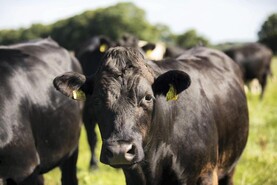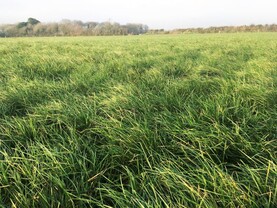The weather has been anything but kind this spring in the sunny south-east, with over 200mm of rain recorded since the start of the year in Kilkenny. The wetter soils locally will take a long time to soak now, and even the driest farms have been struggling to get cows out, especially through the second half of February.
Our cows have been out for only three grazings in the last week, but we pushed hard enough earlier in the month, so we will probably end up at 20% of the farm grazed by the end of February, rather than the target of 30%. We can move quicker from the weekend onwards if we get the forecasted dry weather.
We are three-quarters of the way through calving now and are moving from dairy-bred calves to all beef calves at the weekend. The night duty will finish up at that stage too and we will go back to using the camera and possibly a few sleepless nights from then on.
Night duty
The night duty person does a few extra jobs at night as well as the calving duties, which helps to justify the cost. Jobs include training calves onto the automatic feeder, cleaning the batch feeders, cleaning out and bedding calf pens, and just generally keeping an eye on what’s happening around the yard at night.
With increasing numbers, you are missing a lot of sleep every night through that first six weeks of calving without someone on duty, so we will continue with that system for the foreseeable future. It’s often just a case of recording the dams properly and getting the biestings into the calf as soon as possible, as most of the cows are calving un-assisted, thankfully.
We will try to have most of the replacement heifers for the year trained to the automatic feeder by the end of this week while we have an extra pair of hands to train them. They will hopefully be de-horned and vaccinated by then as well, and the last of the surplus heifer calves will be sold out of the yard soon after that.
The beef calves arriving from now on will be sold out of the yard as soon as possible each week. They are all booked up already, so we will hopefully just batch them up for customers as they arrive.
We have mostly Angus and some Aubrac calves this year. They have arrived easily enough so far, with some arriving out of the heifers already over the last few weeks.
There is a large demand for beef calves from the dairy herd this year. If we can use the right beef bulls on the cows and breed good quality cattle, there might be a future in this, with the right bonuses in place.
The Glanbia-led Twenty20 beef scheme seems to be generating a fair bit of momentum locally with a good premium got for cattle through this winter and if you can add on the Angus bonus on top of that, there might be a workable system there for drystock farmers.
This is top-quality, low carbon footprint beef from quality-assured herds. The calves can be purchased at a reasonable price if a deal can be done with a local dairy farmer to take the calves as early as is allowed.
If the overall market can improve somewhat after Brexit and COVID-19, we might have some sort of a blueprint for both dairy and beef farmers to work with into the future.






 This is a subscriber-only article
This is a subscriber-only article










SHARING OPTIONS: